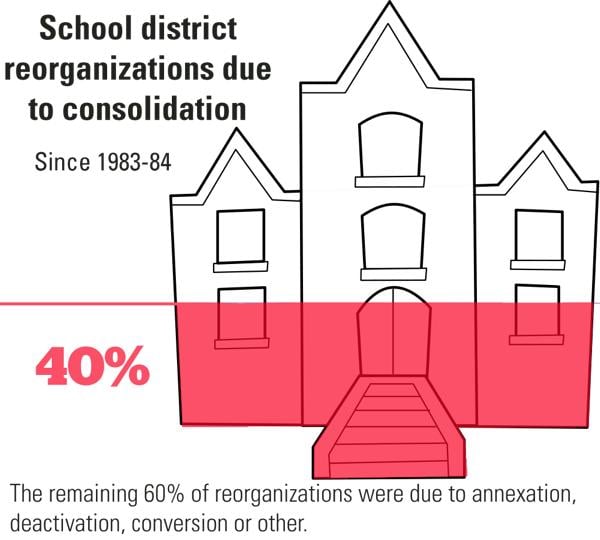After new school board members for Evanston Township High School District 202 and Evanston/Skokie School District 65 took office earlier this week, administrators are weighing “virtual consolidation” of both districts in an effort to save money and improve academics.
Pursuing complete consolidation has been discarded due to high costs. But virtual consolidation — streamlining the districts’ responsibilities and staff without legally or physically merging the two — has gained momentum recently, coming up often during the campaign for last month’s school board election. Supporters of virtual consolidation say in addition to cutting costs, the move could align the curriculum of the 15 schools in District 65 with that at ETHS.
A group of Kellogg students overseen by Prof. Therese McGuire researched consolidation options last year and found that legal and physical consolidation would end up costing the two districts more. Tyler Thornton (Kellogg ’12) and Kevin Poff (Kellogg ’12) told board members in a presentation last June that District 65 schools would have to raise teacher salaries from just less than $70,000 to about $95,000 to match the salaries of ETHS teachers. Schools would also receive less funding overall from taxes and other sources, according to research findings.
“Standard consolidation is not a big money-saver, but virtual consolidation has legs for making sense from an economic perspective,” McGuire said. “Academically, there’s consistency and tracking students throughout their academic career.”
McGuire, who has a child at Nichols Middle School, was a member of an ad hoc budget committee for District 65 that originally proposed consolidation as part of a list of recommendations to address the district’s budget in 2011.
District 65 school board president Tracy Quattrocki said the board is looking to work with McGuire and students to produce further research.
“There has been a lot of improvement in the articulation” of how the two boards can work together, Quattrocki said.
The two districts already collaborate on many fronts, such as working together with the city on Tax Increment Financing sharing agreements and managing Evanston’s Park School for students with disabilities, said Patricia Markham, District 65’s communications director and school board secretary. Additionally, ETHS provides school lunches to some District 65 schools. The two districts will soon head a joint legislative committee that will look at education legislation and its effect on Evanston schools, Markham said.
Administrators from both districts already meet formally once a year. Quattrocki said they are trying to increase these joint board meetings to three or four times a year.
The districts had previously considered some sort of consolidation in the 1990s, but the initiative never got off the ground, McGuire said. Researchers at the time found that a new unit district would be financially strapped after initial funding from the state ceased.
In the past 30 years, the number of school districts in Illinois has fallen from just more than 1,000 to about 860 as a result of consolidation and other cost-cutting efforts, according to data collected by the Kellogg group. However, recent dual district consolidations involved smaller student populations ranging in the hundreds compared with the nearly 10,000 students in districts 65 and 202, McGuire said.
The state’s ongoing fiscal trouble has left districts 65 and 202 to rely on themselves for the issue of consolidation, said Mark Metz, District 202 school board vice president.
“The state doesn’t have money, districts don’t have money, so it wouldn’t make sense to do (complete consolidation),” he said. “We want to save money and benefit students, and if we can’t do both of those, we should be circumspect.”














